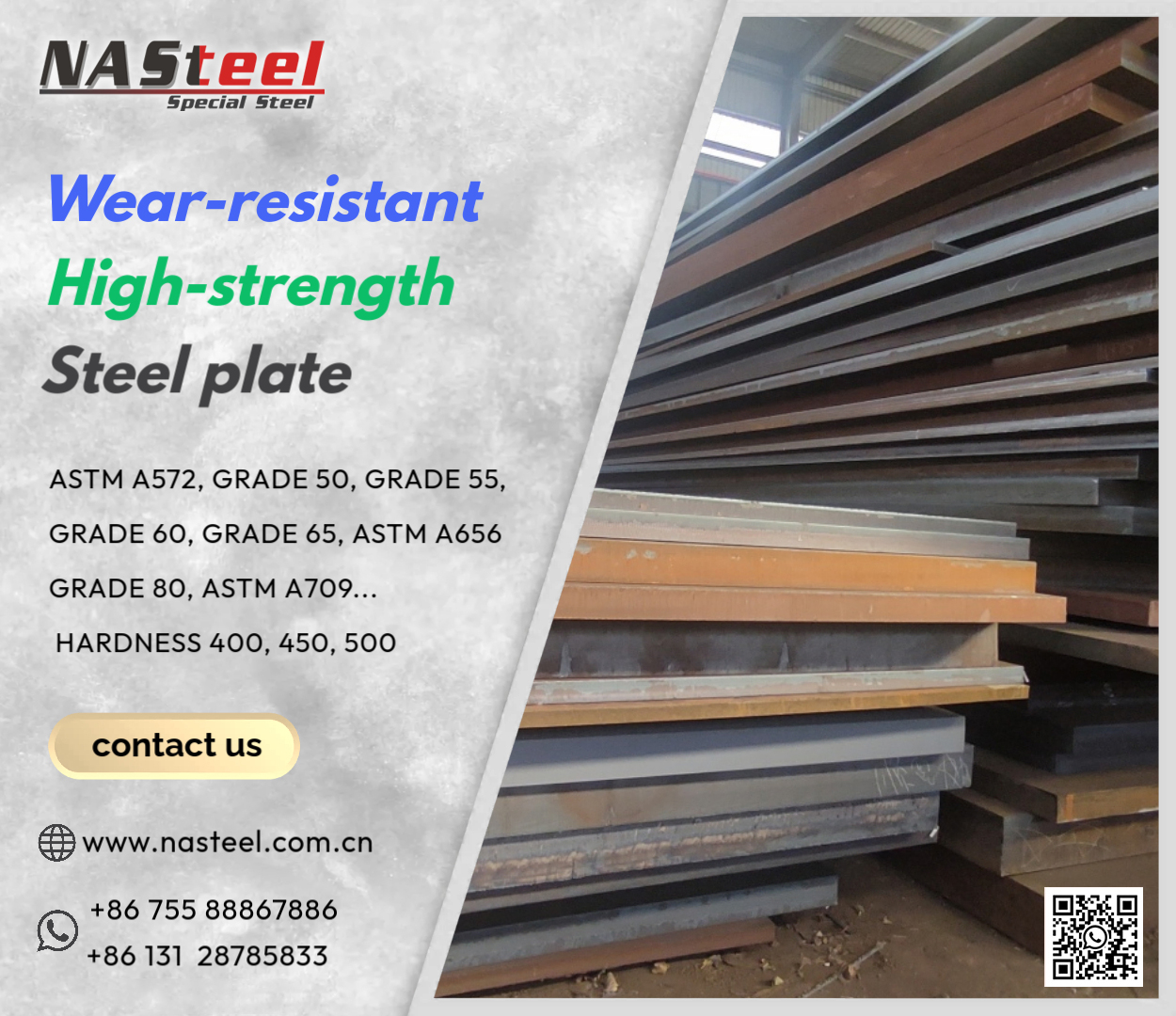Hardness500 Steel Plate Precautions in Post-Processing Production

Hardness 500 steel plate is an ultra-high hardness wear-resistant steel, typically around 500 Brinell Hardness (HBW). It’s used in applications where abrasion resistance is critical — mining equipment, dump truck beds, hoppers, chutes, etc.
Because of its high hardness and strength, post-processing (like cutting, welding, machining, and forming) requires special precautions. Here’s how to handle it safely and effectively:
⚠️ Precautions During Post-Processing of 500 HB Steel
🔧 1. Cutting (Thermal or Mechanical)
🔹 Thermal Cutting (Plasma or Oxy-Fuel)
Preheat to 150–200°C (300–390°F) for plates >20 mm to reduce cracking.
Maintain even heating to avoid thermal stress and distortion.
Cool slowly; rapid cooling may induce cracking near cut edges.
🔹 Mechanical Cutting (Shearing or Sawing)
Not recommended for thick or very hard plates.
May cause edge cracking or rapid tool wear.
Use carbide-tipped saw blades with coolant if sawing.
🔧 2. Machining
Very difficult to machine due to high hardness.
If machining is required:
Use carbide or ceramic tooling.
Low cutting speeds, high feed rates.
Use flood coolant to manage heat.
Better to machine before hardening if possible, or use wear-resistant overlays instead.
🔧 3. Welding
🔹 Biggest Risk: Cracking due to the hardness and low ductility of the base material.
Precautions:
Preheat to 150–200°C (even higher for thick plates).
Use low-hydrogen electrodes (e.g., E7018).
Control heat input – too much heat can reduce hardness, too little increases cracking risk.
Slow cooling — cover the part with insulation post-weld to avoid rapid temperature drop.
🛠 Post-Weld Heat Treatment is generally not recommended for Hardness 500 steels — it may reduce hardness drastically.
🔧 4. Bending/Forming
Forming radius must be large — small radii can cause cracking.
Cold bending only — no hot forming; it will alter the plate’s hardness and structure.
Follow manufacturer’s recommended minimum punch radius (6–8 × thickness).
Preheat to 150–200°C before bending, especially in colder environments.
🔧 5. Drilling and Tapping
Use carbide-tipped drills with slow speed, high feed, and plenty of coolant.
Pilot holes are recommended.
Avoid threading when possible — use bolted joints with pre-drilled holes instead.
✅ Best Practices for Safe and Effective Processing
Task Key Precaution
Cutting Preheat for thickness, avoid fast cooling
Machining Use hard tooling, low speed, coolants
Welding Preheat + low-hydrogen rods, slow cooling
Forming Large radius, preheat, cold bending only
Drilling Carbide drills, coolant, no tapping
🔍 Final Tips
Consider laser cutting or abrasive water jet for the cleanest, least-distorted cuts.